The automotive world is often captivated by comparisons between luxury and practicality, especially when it comes to SUVs. Two models that have ignited discussion among fans and potential buyers alike are the BMW X5 and the VW Tayron. On the surface, they may seem like distant cousins; one embodies prestige, while the other focuses on everyday usability. Let's delve deeper into their technical specifications and innovations to understand how they stack up against each other.
BMW X5 vs VW Tayron – Performance, range & efficiency compared
Both models have their strengths – but which one suits you more?
Compare performance, efficiency, price and space directly: BMW X5 or VW Tayron?
Design and Dimensions
Starting with the exterior, the BMW X5 commands attention with its muscular stance. Measuring between 4935 mm and 4948 mm in length, and with a width ranging from 2004 mm to 2015 mm, the X5 is designed for dominance on the road. In comparison, the VW Tayron is slightly smaller at 4792 mm long and has a width ranging from 1853 mm to 1866 mm. While both vehicles maintain a five-door layout, the X5’s imposing height (up to 1765 mm) gives it a robust appearance, whereas the Tayron stands at a sensible 1668 mm and 1666 mm, making it more maneuverable in tight urban environments.
Power and Performance
Under the hood, the BMW X5 offers an impressive range of powertrains, including Diesel MHEV, Petrol MHEV, and Plugin Hybrid options, with horsepower varying from 298 HP to a staggering 625 HP. In terms of acceleration, the X5 excels, achieving 0 to 100 km/h in as little as 3.9 seconds for the high-performance variant. On the other hand, the VW Tayron presents a more modest power output, with options ranging from 150 HP to 272 HP. It also features an efficient Dual-Clutch Automatic transmission, which some drivers may prefer for a sportier feel. The Tayron achieves 0 to 100 km/h in a respectable 7.3 seconds at its best.
Fuel Economy and Electric Range
In today’s climate-conscious world, fuel efficiency is paramount. The BMW X5 has a fuel consumption range of 7.4 to 12.9 L/100 km, depending on the engine choice. Its Plugin Hybrid variant shines with an astonishing electric range of 97 km. Meanwhile, the VW Tayron claims a more efficient consumption at just 6.2 L/100 km and offers a competitive electric range of up to 126 km, making it an attractive choice for urban dwellers or eco-conscious buyers.
Interior Space and Comfort
Both SUVs provide seating for five passengers, but when it comes to trunk space, the BMW X5 boasts a generous 650 L, while the VW Tayron offers a more spacious 885 L. This edge may appeal to families and those needing extra cargo capacity. The interior quality of the BMW X5, however, is refined, featuring premium materials and advanced technology that emphasize luxury. The Tayron, while not as lavish, still maintains a modern cockpit with user-friendly infotainment and ample comfort.
Safety Features and Innovations
Innovations in safety are critical in today’s automotive market. The BMW X5 is known for its comprehensive safety suite, including advanced driver assistance systems such as adaptive cruise control and lane-keeping assistance. In contrast, the VW Tayron provides a robust safety package with similar features but often at a lower price point. Both models have performed well in crash tests, giving consumers confidence in their safety.
Final Verdict
Both the BMW X5 and VW Tayron have their unique strengths. The X5 leans towards luxury, performance, and powerful engine choices, catering to those who seek prestige and exhilarating driving experiences. Conversely, the Tayron focuses on practicality, efficiency, and family-friendly cargo space, making it an ideal choice for budget-conscious consumers looking for reliability without the luxury price tag.
Ultimately, the decision between the two may come down to what the buyer values more—opulence and performance with the X5 or practicality and economy with the Tayron. Each vehicle serves a different purpose, ensuring that both have a dedicated following.
Here’s where it gets real: The technical differences in detail
Costs and Efficiency:
Price and efficiency are often the first things buyers look at. Here it becomes clear which model has the long-term edge – whether at the pump, the plug, or in purchase price.
VW Tayron has a clearly advantage in terms of price – it starts at 39600 £, while the BMW X5 costs 77100 £. That’s a price difference of around 37445 £.
Fuel consumption also shows a difference: VW Tayron manages with 1.50 L and is therefore decisively more efficient than the BMW X5 with 3 L. The difference is about 1.50 L per 100 km.
As for range, the VW Tayron performs a bit better – achieving up to 123 km, about 18 km more than the BMW X5.
Engine and Performance:
Power, torque and acceleration say a lot about how a car feels on the road. This is where you see which model delivers more driving dynamics.
When it comes to engine power, the BMW X5 has a convincingly edge – offering 625 HP compared to 272 HP. That’s roughly 353 HP more horsepower.
In acceleration from 0 to 100 km/h, the BMW X5 is decisively quicker – completing the sprint in 3.90 s, while the VW Tayron takes 6.10 s. That’s about 2.20 s faster.
In terms of top speed, the BMW X5 performs minimal better – reaching 250 km/h, while the VW Tayron tops out at 240 km/h. The difference is around 10 km/h.
There’s also a difference in torque: BMW X5 pulls clearly stronger with 750 Nm compared to 400 Nm. That’s about 350 Nm difference.
Space and Everyday Use:
Whether family car or daily driver – which one offers more room, flexibility and comfort?
Both vehicles offer seating for 5 people.
In curb weight, VW Tayron is evident lighter – 1682 kg compared to 2240 kg. The difference is around 558 kg.
In terms of boot space, the VW Tayron offers distinct more room – 885 L compared to 650 L. That’s a difference of about 235 L.
In maximum load capacity, the VW Tayron performs slightly better – up to 2090 L, which is about 220 L more than the BMW X5.
When it comes to payload, BMW X5 a bit takes the win – 705 kg compared to 566 kg. That’s a difference of about 139 kg.
Who wins the race?
The BMW X5 proves to be has a very small edge and therefore becomes our DriveDuel Champion!
BMW X5 is the better all-rounder in this comparison.
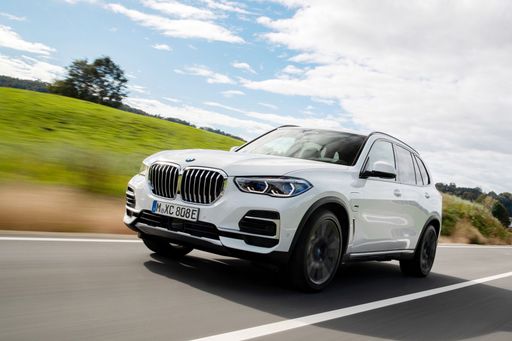 @ BMW Group Press
@ BMW Group Press
BMW X5
BMW X5
The BMW X5 blends athletic handling with a roomy, premium interior, feeling equally at home on twisty country roads and the school-run car park. Its executive-lounge cabin and confident road presence make it a tempting choice for buyers who want comfort, capability and just a little bit of bragging rights.
details @ BMW Group Press
@ BMW Group Press
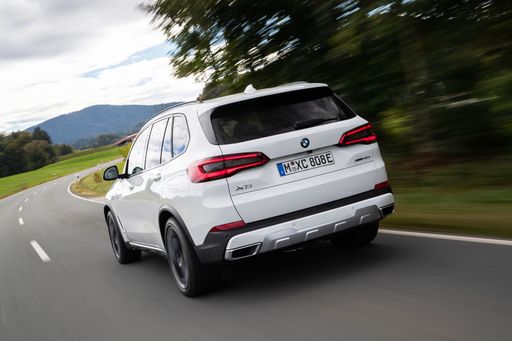 @ BMW Group Press
@ BMW Group Press
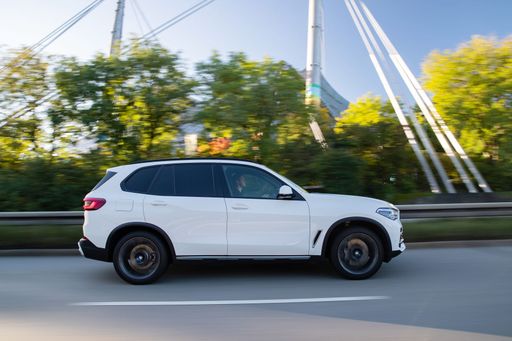 @ BMW Group Press
@ BMW Group Press
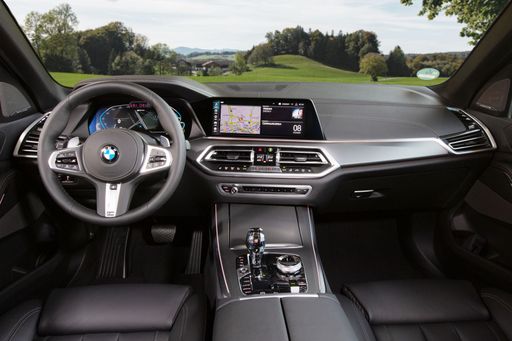 @ BMW Group Press
@ BMW Group Press
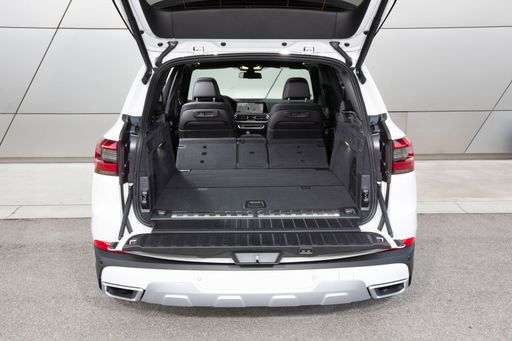 @ BMW Group Press
@ BMW Group Press
VW Tayron
The VW Tayron is Volkswagen's roomy, no-nonsense SUV that pairs clean, familiar styling with a practical cabin built for families and everyday use. It rides comfortably, packs sensible tech and creature comforts, and feels like the sensible sweater of SUVs for buyers who prefer steady value over headline-grabbing drama.
details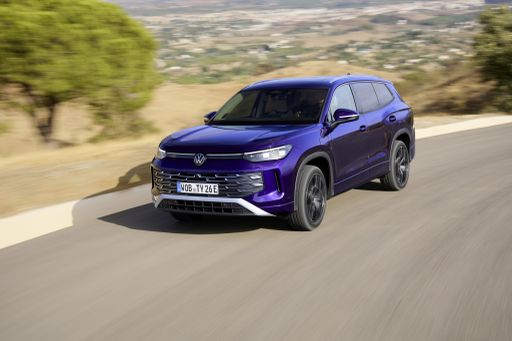 @ Volkswagen AG / VW Media
@ Volkswagen AG / VW Media
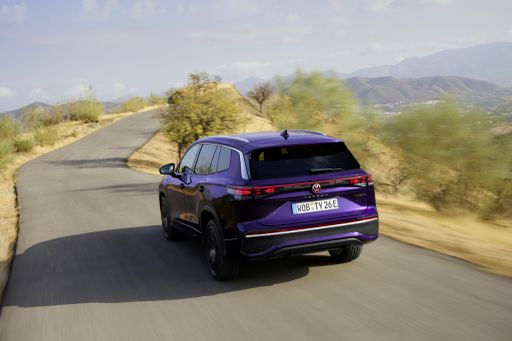 @ Volkswagen AG / VW Media
@ Volkswagen AG / VW Media
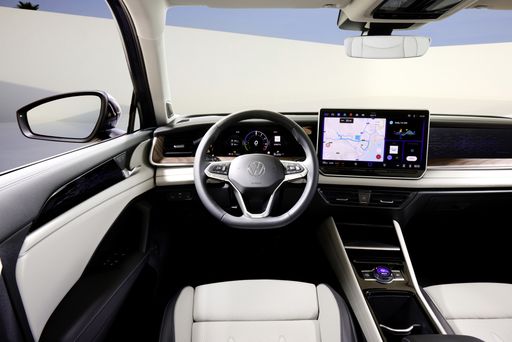 @ Volkswagen AG / VW Media
@ Volkswagen AG / VW Media
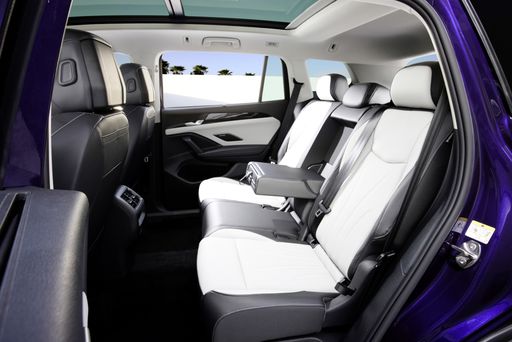 @ Volkswagen AG / VW Media
@ Volkswagen AG / VW Media
 @ BMW Group Press
@ BMW Group Press
|
 @ Volkswagen AG / VW Media
@ Volkswagen AG / VW Media
|
|
|
|
Costs and Consumption |
|
|---|---|
|
Price
77100 - 143500 £
|
Price
39600 - 53300 £
|
|
Consumption L/100km
3 - 12.8 L
|
Consumption L/100km
1.5 - 8.5 L
|
|
Consumption kWh/100km
-
|
Consumption kWh/100km
-
|
|
Electric Range
105 km
|
Electric Range
116 - 123 km
|
|
Battery Capacity
25.70 kWh
|
Battery Capacity
19.70 kWh
|
|
co2
68 - 289 g/km
|
co2
33 - 192 g/km
|
|
Fuel tank capacity
69 - 83 L
|
Fuel tank capacity
45 - 58 L
|
Dimensions and Body |
|
|---|---|
|
Body Type
SUV
|
Body Type
SUV
|
|
Seats
5
|
Seats
5
|
|
Doors
5
|
Doors
5
|
|
Curb weight
2240 - 2495 kg
|
Curb weight
1682 - 1948 kg
|
|
Trunk capacity
500 - 650 L
|
Trunk capacity
705 - 885 L
|
|
Length
4935 - 4948 mm
|
Length
4792 mm
|
|
Width
2004 - 2015 mm
|
Width
1853 - 1866 mm
|
|
Height
1755 - 1765 mm
|
Height
1666 - 1668 mm
|
|
Max trunk capacity
1720 - 1870 L
|
Max trunk capacity
1915 - 2090 L
|
|
Payload
565 - 705 kg
|
Payload
489 - 566 kg
|
Engine and Performance |
|
|---|---|
|
Engine Type
Petrol MHEV, Diesel MHEV, Plugin Hybrid
|
Engine Type
Petrol MHEV, Diesel, Petrol, Plugin Hybrid
|
|
Transmission
Automatic
|
Transmission
Automatic
|
|
Transmission Detail
Automatic Gearbox
|
Transmission Detail
Dual-Clutch Automatic
|
|
Drive Type
All-Wheel Drive
|
Drive Type
Front-Wheel Drive, All-Wheel Drive
|
|
Power HP
298 - 625 HP
|
Power HP
150 - 272 HP
|
|
Acceleration 0-100km/h
3.9 - 6.1 s
|
Acceleration 0-100km/h
6.1 - 9.7 s
|
|
Max Speed
233 - 250 km/h
|
Max Speed
204 - 240 km/h
|
|
Torque
540 - 750 Nm
|
Torque
250 - 400 Nm
|
|
Number of Cylinders
6 - 8
|
Number of Cylinders
4
|
|
Power kW
219 - 460 kW
|
Power kW
110 - 200 kW
|
|
Engine capacity
2993 - 4395 cm3
|
Engine capacity
1498 - 1984 cm3
|
General |
|
|---|---|
|
Model Year
2025
|
Model Year
2025
|
|
CO2 Efficiency Class
G, B
|
CO2 Efficiency Class
E, F, G, B
|
|
Brand
BMW
|
Brand
VW
|
Is the BMW X5 offered with different drivetrains?
The BMW X5 is available as All-Wheel Drive.
The prices and data displayed are estimates based on German list prices and may vary by country. This information is not legally binding.
